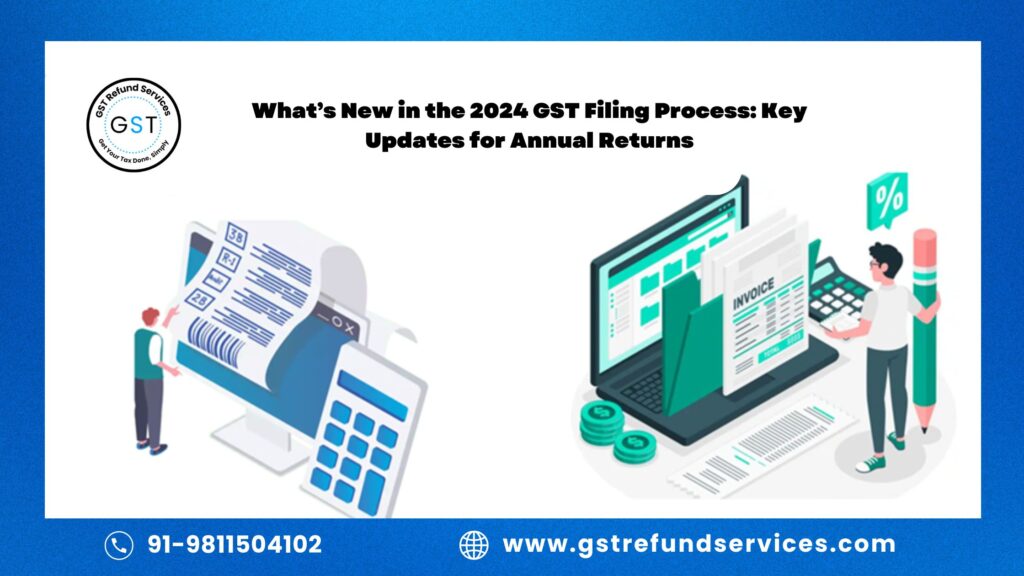
GST Filing, Major modifications were made to India’s GST (Goods and Services Tax) structure in 2024. The way businesses file their annual returns will be directly affected by these changes.The alterations are designed to streamline the procedure, bolster adherence, and enhance the overall tax management. It is imperative for businesses to grasp these adjustments in order to adeptly manage the filing process and leverage any potential advantages stemming from these amendments.
1. Updated annual return filing threshold limits
The cutoff points for filing an annual return that is required were updated in 2024. Companies that have less than the revised level for turnover are no longer required to file GSTR-9s. The purpose of this modification is to make small enterprises’ compliance burden lighter and to expedite the filing process for entities with lower turnover.
2. Simplification of Form GSTR-9C
A shortened Form GSTR-9C has been used in order to simplify the audit report requirement. Firms will find it easier to reconcile their tax returns with audited statements of finances because to the new format’s lower complexity and information requirement. It is anticipated that this change will hurry up the audit process also lessen its managerial load.
3. Compliant with the Expanded Input Tax Credit (ITC)
Stricter ITC reporting standards are a result of the 2024 updates. Companies must now offer an exhaustive reconcile of their claims for input tax credits, guaranteeing that all credits have been properly recorded and supported. The purpose of this action is to enhance the credibility of the GST Filing system and resist ITC abuse.
4. Automated Data Integration
Robust automated data integration tools have been added to the GST Filing portal. This implies that a sizable amount of the data needed for GSTR-9 will be automatically filled in based on GSTR-1 and GSTR-3B filings from the past. Automation is intended to speed up the filing process, minimize errors, and minimize manual data entry.
5. Extended Late Fee Waivers
Acknowledging the challenges businesses face, the government has extended the waiver of late fees for delayed annual return filings in specific situations. This provision offers financial relief to businesses that encounter unexpected delays or difficulties in meeting filing deadlines.
6. Improved Reconciliation Tools
The GST Filing portal now includes enhanced reconciliation tools to assist businesses in verifying and reconciling their GST data. These tools help ensure that the information provided in annual returns is consistent with monthly and quarterly filings, reducing the likelihood of discrepancies and compliance issues.
What Businesses Should Do
To adapt to these changes and ensure smooth compliance, businesses should:
- Examine the Threshold Updates :To see if you’re exempt from submitting GSTR-9 by seeing if your company is below the new threshold restrictions.
- Apply GSTR-9C Simplified: Utilize the streamlined Form GSTR-9C to help expedite the audit procedure.
- Improve Your ITC Reports: To comply with the new laws, make sure that ITC claims are reported accurately and in detail.
- Make Use of Automation: Make use of the GST portal’s automated tools to reduce human mistake and expedite the filing procedure.
- Keep an eye on deadlines: To prevent fines, keep track of due dates and any applicable exemptions of late fees.
The 2024 updates to the GST filing process are designed to make compliance easier and more efficient for businesses. By staying informed about these changes and adapting your filing practices accordingly, you can ensure accurate and timely submissions, reduce the risk of penalties, and optimize your GST management.
For personalized assistance with navigating these updates and ensuring compliance with the latest GST regulations, contact GST Refund Services. We’re here to provide expert support and help you make the most of these new developments.


